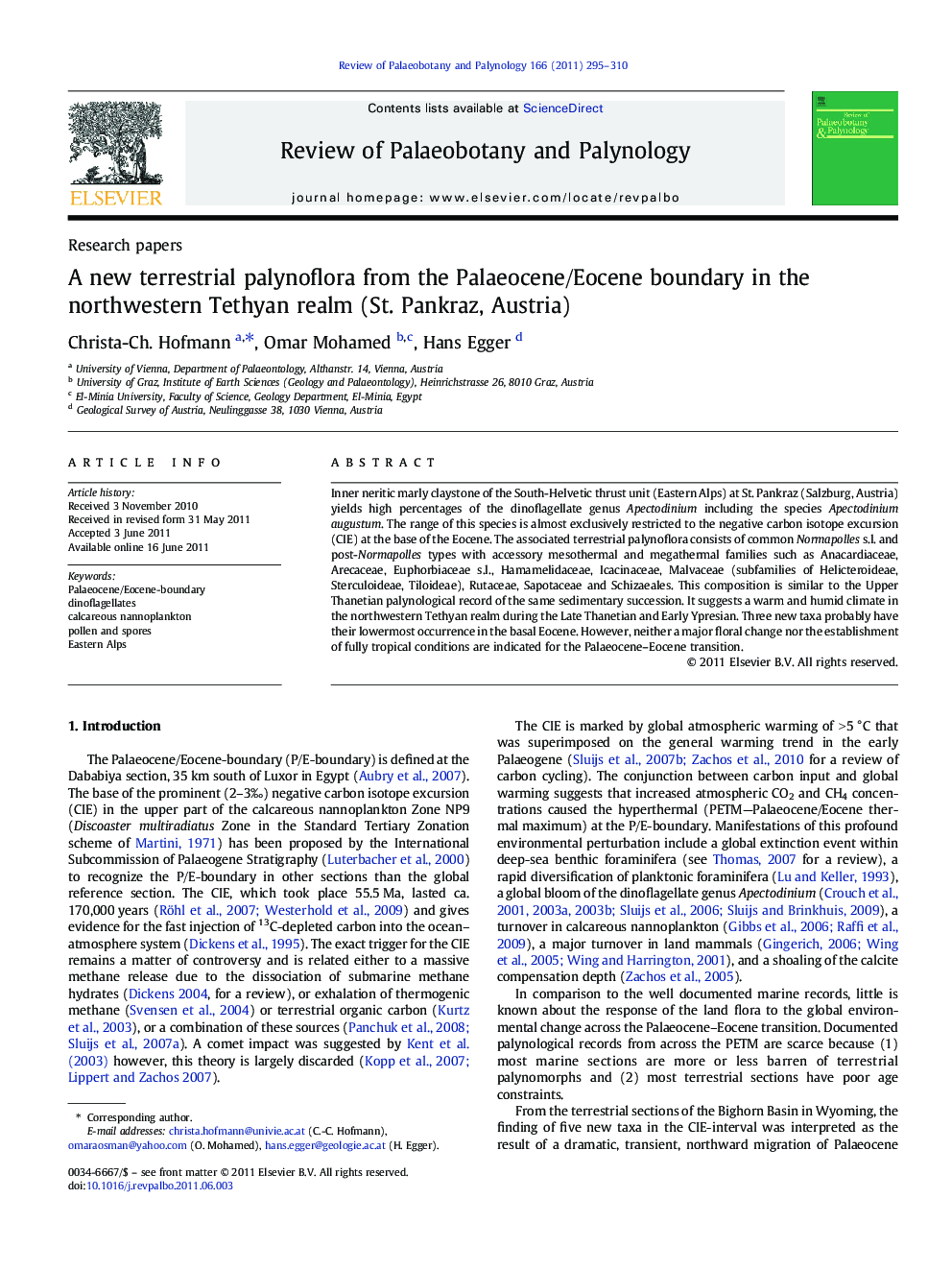| Article ID | Journal | Published Year | Pages | File Type |
|---|---|---|---|---|
| 4750533 | Review of Palaeobotany and Palynology | 2011 | 16 Pages |
Inner neritic marly claystone of the South-Helvetic thrust unit (Eastern Alps) at St. Pankraz (Salzburg, Austria) yields high percentages of the dinoflagellate genus Apectodinium including the species Apectodinium augustum. The range of this species is almost exclusively restricted to the negative carbon isotope excursion (CIE) at the base of the Eocene. The associated terrestrial palynoflora consists of common Normapolles s.l. and post-Normapolles types with accessory mesothermal and megathermal families such as Anacardiaceae, Arecaceae, Euphorbiaceae s.l., Hamamelidaceae, Icacinaceae, Malvaceae (subfamilies of Helicteroideae, Sterculoideae, Tiloideae), Rutaceae, Sapotaceae and Schizaeales. This composition is similar to the Upper Thanetian palynological record of the same sedimentary succession. It suggests a warm and humid climate in the northwestern Tethyan realm during the Late Thanetian and Early Ypresian. Three new taxa probably have their lowermost occurrence in the basal Eocene. However, neither a major floral change nor the establishment of fully tropical conditions are indicated for the Palaeocene–Eocene transition.
► Terrestrial palynoflora and Apectodinium acme from the Palaeocene/Eocene boundary of Austria. ► SEM studies on terrestrial palynomorphs. ► No major change of land vegetation.
